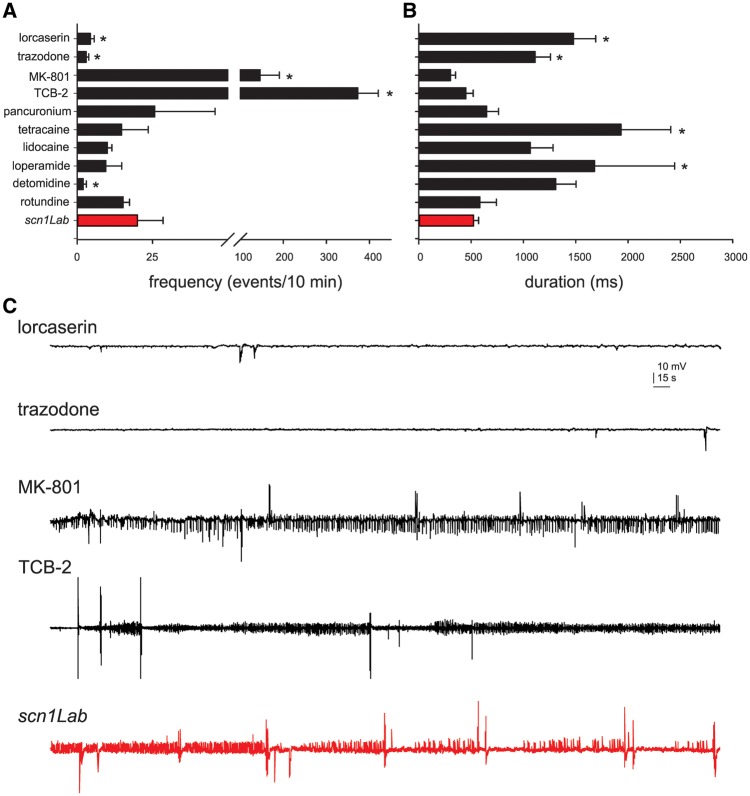Figure 5.
Electrophysiological assay to identify drugs that rescue the scn1Lab mutant epilepsy phenotype. Bar graphs showing the (A) number, and (B) duration of epileptiform events in a 10-min recording epoch for scn1Lab larvae exposed to lorcaserin (n = 8), trazodone (n = 10), MK-801 (n = 4), TCB-2 (n = 9), pancuronium (n = 8), tetracaine (n = 4), lidocaine (n = 6), loperamide (n = 8), detomidine (n = 5), rotundine (n = 4), or scn1Lab mutants (n = 20). Graph represent mean ± SEM. Student’s unpaired t-test or Mann–Whitney rank sum test were used *P < 0.05. (C) Representative field electrode recording epochs (10 min) are shown for four compounds with significant changes in the frequency of events compared to untreated scn1Lab mutant zebrafish (red). Recordings were obtained with an electrode placed in the forebrain of agar-immobilized scn1Lab larvae that had previously showed suppressed seizure-like behaviour in the locomotion assay.

